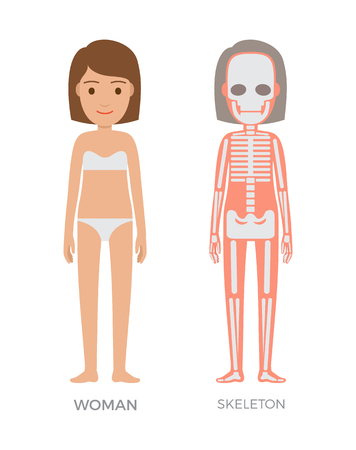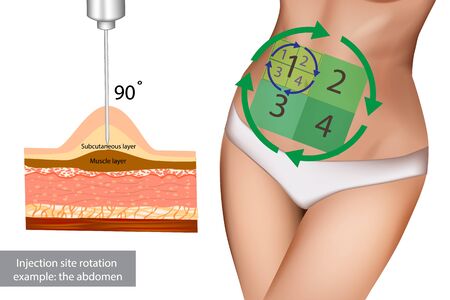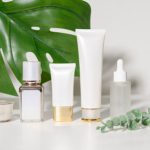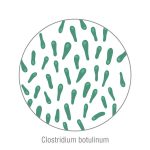1. Understanding Hyperpigmentation
Hyperpigmentation is a common skin condition that causes certain areas of the skin to appear darker than the surrounding skin. This happens due to an excess production of melanin, the pigment responsible for skin color. While hyperpigmentation itself is harmless, it can be a cosmetic concern for many people.
Common Types of Hyperpigmentation
There are several types of hyperpigmentation, each with different causes and characteristics. Below are some of the most common types:
| Type | Description | Common Causes |
|---|---|---|
| Melasma | Patches of darkened skin, usually on the face, often symmetrical. | Hormonal changes (pregnancy, birth control), sun exposure. |
| Sun Spots (Solar Lentigines) | Small, dark spots that appear on areas frequently exposed to the sun. | UV exposure, aging. |
| Post-Inflammatory Hyperpigmentation (PIH) | Dark spots or patches left behind after inflammation or injury to the skin. | Acne, eczema, cuts, burns. |
The Science Behind Hyperpigmentation
The primary factor behind hyperpigmentation is melanin overproduction. Melanocytes, the cells responsible for producing melanin, can become overstimulated due to various triggers like UV radiation, hormonal fluctuations, and skin trauma. When this happens, excess melanin accumulates in specific areas, leading to visible dark spots or patches.
The Role of Sun Exposure
The sun is one of the biggest contributors to hyperpigmentation. UV rays stimulate melanin production as a protective response. Over time, prolonged sun exposure without adequate protection can lead to persistent dark spots and uneven skin tone.
The Impact of Hormones and Inflammation
Certain hormones—especially estrogen and progesterone—can trigger melasma, which is why it commonly appears during pregnancy or when taking hormonal contraceptives. Additionally, any form of skin inflammation (such as acne or eczema) can leave behind pigmentation issues as part of the healing process.
Who Is More Prone to Hyperpigmentation?
While hyperpigmentation can affect anyone, some individuals are more prone to developing it:
- Darker Skin Tones: People with medium to deep skin tones naturally have more active melanocytes, making them more susceptible to PIH and melasma.
- Poor Sun Protection Habits: Those who frequently skip sunscreen are at higher risk for sun spots and worsening pigmentation.
- Pregnant Women: Due to hormonal changes, pregnancy often triggers melasma (also known as the “mask of pregnancy”).
- Aging Individuals: As we age, accumulated sun exposure leads to age-related pigmentation issues like sun spots.
Understanding these factors is key to managing and preventing hyperpigmentation effectively. In the next section, we will explore how hyperpigmentation develops at a deeper cellular level.
2. The Science Behind Skin Pigmentation
To understand hyperpigmentation, its important to first know how skin pigmentation works. Our skin color is determined by melanin, a natural pigment produced by specialized cells called melanocytes. These cells are found in the basal layer of the epidermis and play a crucial role in determining our unique skin tones.
How Melanin Production Works
Melanin production is a complex biological process known as melanogenesis. It starts when melanocytes produce melanin in response to various stimuli, such as sun exposure or hormonal changes. Once produced, melanin is transferred to surrounding skin cells (keratinocytes), where it helps protect the skin from UV radiation.
The Role of Melanocytes
Melanocytes act as the “factories” of melanin production. They contain tiny structures called melanosomes, where melanin is synthesized and stored before being distributed to skin cells. The number and activity of melanocytes vary among individuals and are influenced by genetics, age, and environmental factors.
Factors That Influence Skin Color
Several factors determine an individuals skin tone and how their skin reacts to external influences like sunlight or injury. These include genetics, UV exposure, hormonal changes, and even certain medical conditions.
| Factor | Effect on Skin Pigmentation |
|---|---|
| Genetics | Your natural skin tone is inherited from your parents and depends on the amount and type of melanin your body produces. |
| UV Exposure | The sun triggers increased melanin production as a protective response, which can lead to tanning or hyperpigmentation. |
| Hormonal Changes | Pregnancy, birth control pills, and hormonal imbalances can stimulate excess melanin production, sometimes leading to conditions like melasma. |
| Aging | Aging affects melanocyte activity, sometimes leading to uneven pigmentation or dark spots. |
| Skin Inflammation & Injury | Certain skin injuries (like acne or cuts) can trigger post-inflammatory hyperpigmentation (PIH), leaving dark marks behind. |
The balance of these factors determines not only your natural skin tone but also how prone you are to developing hyperpigmentation over time.

3. Causes and Triggers of Hyperpigmentation
Hyperpigmentation occurs when the skin produces excess melanin, leading to dark spots or uneven skin tone. Several internal and external factors can contribute to this condition, and understanding these triggers can help in prevention and treatment.
Sun Exposure
One of the most common causes of hyperpigmentation is prolonged sun exposure. UV rays stimulate melanocytes (melanin-producing cells) to produce more pigment as a defense mechanism. Over time, repeated exposure without proper sun protection can lead to persistent dark spots known as sunspots or age spots.
Hormonal Changes
Fluctuations in hormone levels, especially during pregnancy, menopause, or while taking birth control pills, can trigger a type of hyperpigmentation called melasma. This condition often appears as symmetrical patches on the face, particularly on the cheeks, forehead, and upper lip.
Inflammation and Skin Trauma
Post-inflammatory hyperpigmentation (PIH) occurs when the skin darkens after an injury or irritation. Common causes include acne, eczema, burns, or even aggressive skincare treatments like chemical peels. The inflammation triggers an overproduction of melanin as part of the healing process.
Genetic Predisposition
Some individuals are genetically more prone to hyperpigmentation than others. Those with darker skin tones naturally have more active melanocytes, making them more susceptible to developing pigmentation disorders from sun exposure or inflammation.
Common Causes and Their Effects
| Cause | Description | Common Areas Affected |
|---|---|---|
| Sun Exposure | UV rays stimulate excess melanin production | Face, hands, shoulders |
| Hormonal Changes | Pigment-producing cells react to hormonal fluctuations | Cheeks, forehead, upper lip |
| Inflammation & Skin Trauma | Irritated skin heals with increased pigmentation | Affected area (acne scars, burns) |
| Genetics | Certain ethnic backgrounds are more prone to pigmentation issues | Darker skin tones generally affected more |
4. Effective Treatment Options
Hyperpigmentation can be stubborn, but there are several effective treatment options available. From professional procedures to topical ingredients, choosing the right approach depends on your skin type, the severity of pigmentation, and your overall skincare goals.
Professional Treatments
For those looking for faster and more noticeable results, professional treatments performed by dermatologists or licensed estheticians can help reduce hyperpigmentation effectively.
Laser Therapy
Laser treatments use focused light energy to break down excess melanin in the skin. Different types of lasers target various pigmentation concerns:
| Type of Laser | How It Works | Best For |
|---|---|---|
| Ablative Lasers (e.g., CO2, Erbium) | Removes layers of skin to promote new cell growth | Severe hyperpigmentation, deep scars |
| Non-Ablative Lasers (e.g., Nd:YAG, Alexandrite) | Targets pigment without removing skin layers | Mild to moderate pigmentation, minimal downtime |
| Pulsed-Dye Lasers (PDL) | Reduces redness and vascular-related discoloration | Post-inflammatory hyperpigmentation (PIH), rosacea-related dark spots |
Chemical Peels
Chemical peels involve applying a solution that exfoliates the top layers of skin, helping to fade dark spots over time. They come in different strengths:
- Mild Peels (AHA or BHA): Best for surface-level pigmentation and gentle brightening.
- Medium Peels (TCA): Penetrates deeper into the skin to treat moderate hyperpigmentation.
- Deep Peels (Phenol): Used for severe pigmentation issues but requires longer recovery.
Topical Ingredients for Hyperpigmentation
If you prefer at-home treatments, certain topical ingredients can gradually lighten dark spots with consistent use.
Hydroquinone
A dermatologist-recommended ingredient that inhibits melanin production, making it highly effective for reducing dark patches.
Retinoids
This vitamin A derivative speeds up cell turnover and helps fade pigmentation while improving overall skin texture.
Vitamin C
A powerful antioxidant that brightens skin and reduces oxidative stress, preventing further dark spot formation.
The Best Approach: Combination Therapy
The most effective way to treat hyperpigmentation is often a combination of professional treatments and topical ingredients. Consulting a dermatologist can help determine the best plan based on your specific skin concerns.
5. Prevention and Skincare Tips
Preventing hyperpigmentation starts with a proactive approach to skincare and lifestyle habits. By protecting your skin from environmental damage and following a targeted routine, you can minimize the risk of dark spots and discoloration.
Sun Protection: Your First Line of Defense
Exposure to UV rays is one of the main causes of hyperpigmentation. Taking the right precautions can significantly reduce your risk.
Essential Sun Protection Tips:
- Use Broad-Spectrum Sunscreen: Choose SPF 30 or higher and apply it daily, even on cloudy days.
- Reapply Every Two Hours: If youre outdoors, sweating, or swimming, reapply sunscreen frequently.
- Wear Protective Clothing: Hats, sunglasses, and long sleeves help shield your skin from harmful UV rays.
- Avoid Peak Sun Hours: Try to stay in the shade between 10 AM and 4 PM when the sun is strongest.
A Skincare Routine for Hyperpigmentation Prevention
A consistent skincare routine helps maintain an even skin tone and prevent dark spots. Incorporate these key steps into your daily regimen:
| Step | Description |
|---|---|
| Cleansing | Use a gentle cleanser to remove dirt, oil, and impurities without stripping the skin. |
| Exfoliation | Add a mild exfoliant (AHAs or BHAs) 2-3 times per week to promote cell turnover. |
| Treatment Serums | Select serums with ingredients like vitamin C, niacinamide, or licorice extract to brighten skin and reduce pigmentation. |
| Sunscreen | This is the most important step—apply sunscreen every morning as the last step in your routine. |
Lifestyle Changes to Support Healthy Skin
Your overall health plays a role in preventing hyperpigmentation. Consider these lifestyle adjustments:
- Avoid Picking at Your Skin: Scratching acne or blemishes can lead to post-inflammatory hyperpigmentation.
- Maintain a Balanced Diet: Eat antioxidant-rich foods like berries, leafy greens, and nuts for skin health.
- Stay Hydrated: Drinking enough water keeps your skin hydrated and supports healing.
- Manage Stress Levels: High stress can trigger inflammation that worsens pigmentation issues.
- Prioritize Sleep: Getting 7-9 hours of sleep each night helps with skin repair and regeneration.
The Importance of Consistency
The key to preventing hyperpigmentation is consistency. By following these protective measures daily, you can maintain an even complexion and minimize future discoloration.


